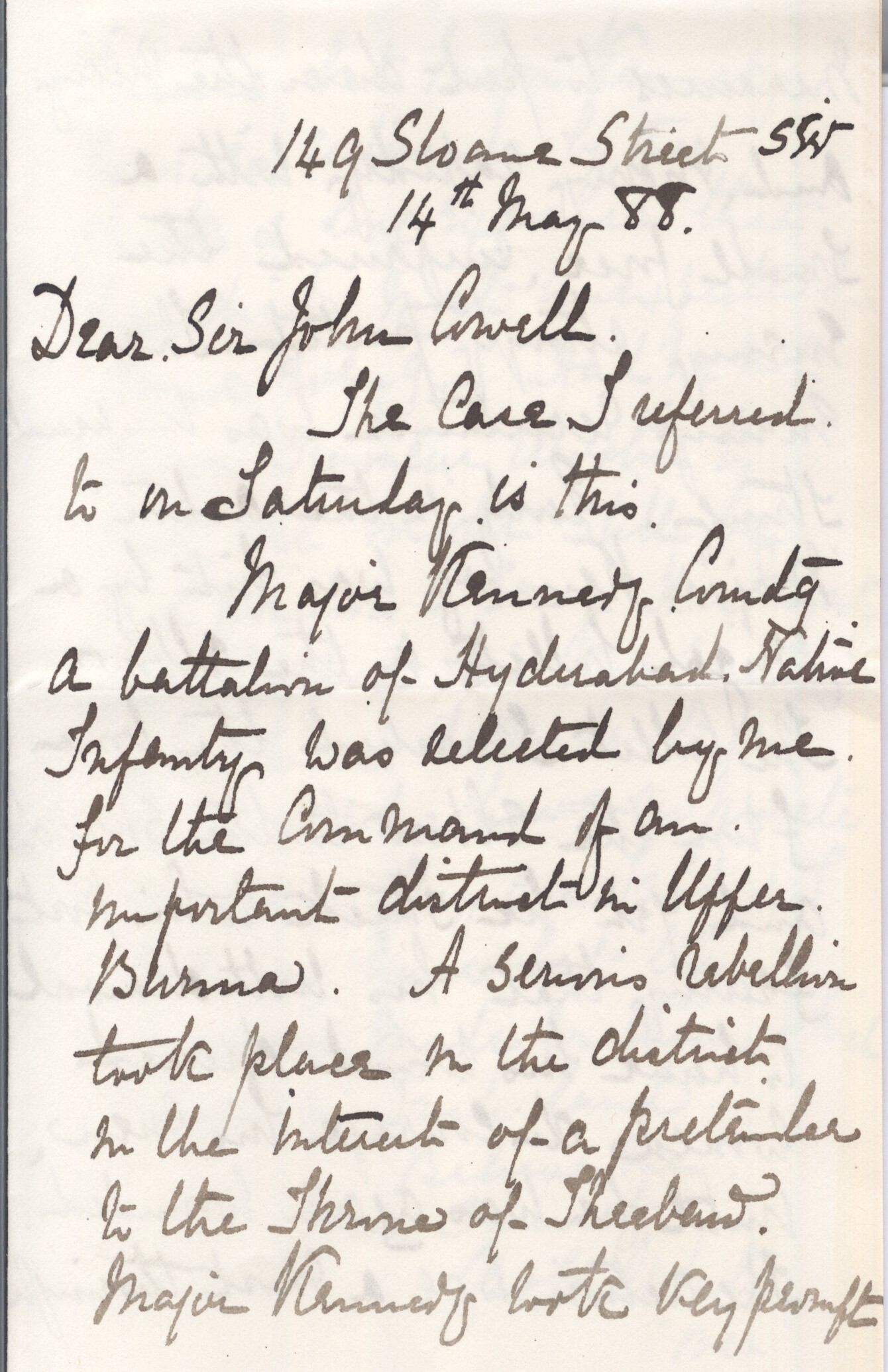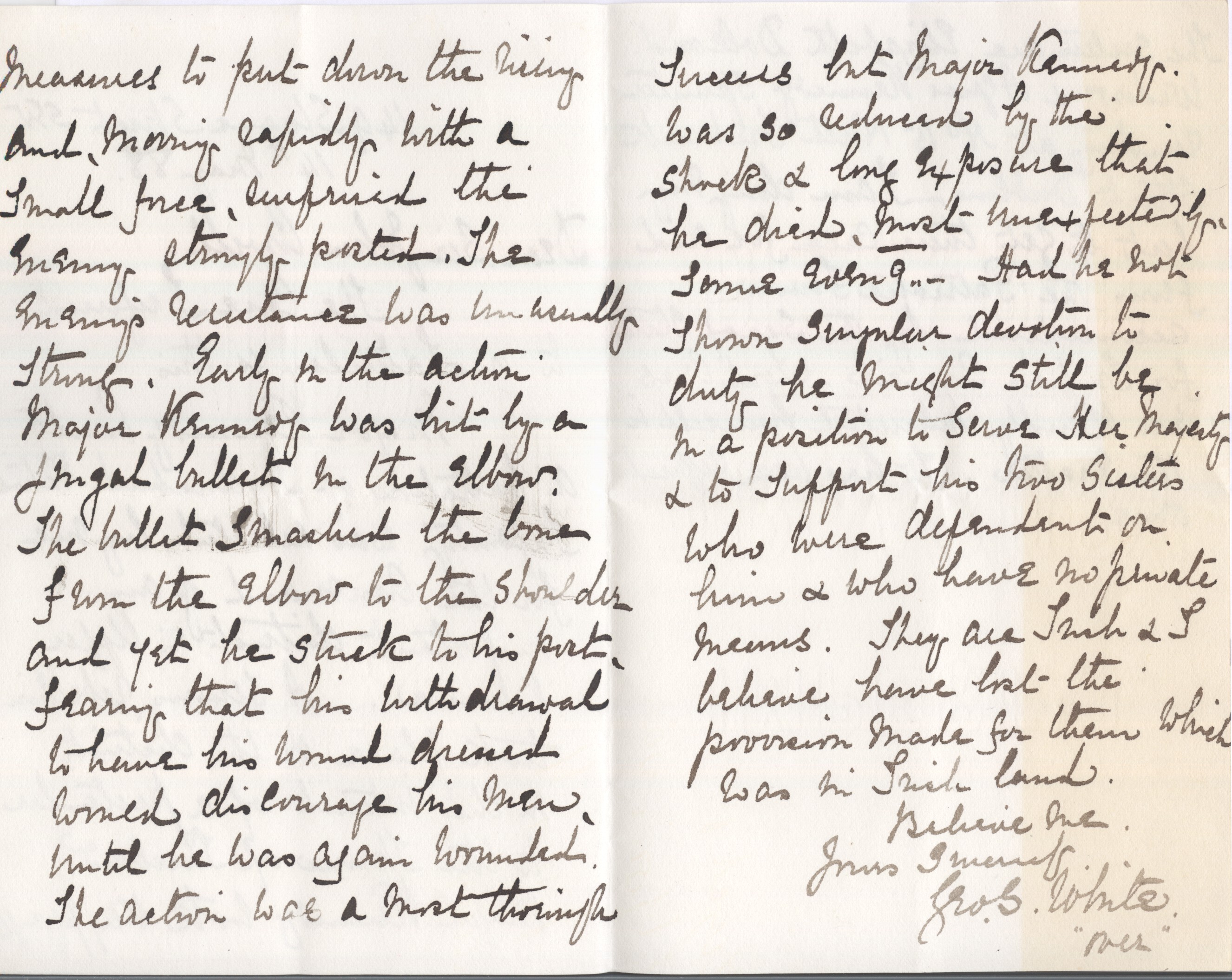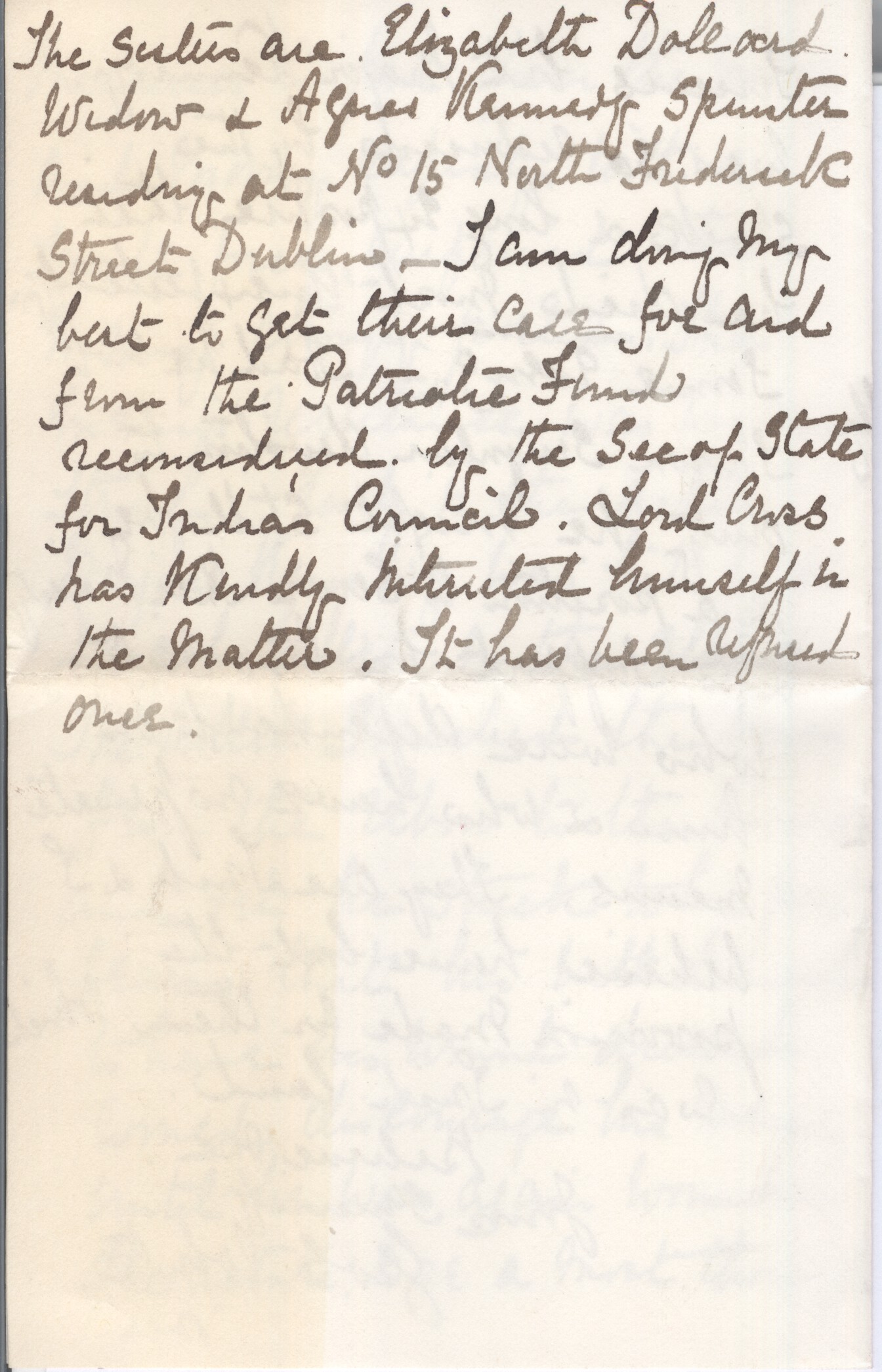
WHITE
(Sir George Stuart, 1835-1912, Field Marshal, Winner of the Victoria Cross, Commander in Chief in India and Defender of Ladysmith)
Important Autograph Letter Signed to Sir John Clayton COWELL
(1832-1894, Major-General and later Master of the Queen's Household and governor of Windsor Castle) explaining the case of "Major Kennedy Cmdg a battalion of Hyderabad Native Infantry was selected by me for the Command of an important district in Upper Burma. A serious rebellion took place in the district in the interest of a pretender to the Throne of Theebaw. Major Kennedy took very prompt measures to put down the rising and, moving rapidly with a small force, surprised the enemy strongly posted. The enemy's resistance was unusually strong. Early in the action Major Kennedy was hit by a ... bullet in the elbow. The bullet smashed the bone from the elbow to the shoulder and yet he stuck to his post, fearing that his withdrawal to have his wound dressed would discourage his men, until he was again wounded. The action was a most thorough success but Major Kennedy was so reduced by the shock & long exposure that he died, most unexpectedly the same eveng. Had he not shown singular devotion to duty he might still be in a position to serve Her Majesty & to support his two sisters who were dependent on him & who have no private means. They are Irish & I believe have lost the provision made for them which was in Irish land ..." with a long postscript saying that the sisters are "Elizabeth Dollard Widow & Agnes Kennedy Spinster ... I am doing my best to get their case for aid from the Patriotic Fund recommended by the Sec of State for India's Council. Lord Cross has kindly instructed himself in the matter ...", 4 sides 8vo., 149 Sloane Street, 14th May
White was stationed at Peshawar during the Indian Mutiny and then fought at the Battle of Charasiab in October 1879 and at the Battle of Kandahar in September 1880 during the Second Anglo-Afghan War. For his bravery during these two battles, he was awarded the Victoria Cross. He went on to command a brigade during the Third Anglo-Burmese War in 1886 and became commander of Quetta District in 1889 in which role he led operations in the Zhob Valley and in Balochistan. He was commander of the forces in Natal at the opening of the Second Boer War and fought at the Battle of Elandslaagte in October 1899. He commanded the garrison at the Siege of Ladysmith: although instructed by General Sir Redvers Buller to surrender the garrison he responded "I hold Ladysmith for the Queen" and held out for another four months before being relieved in February 1900. He was one of the most decorated men in the British Army
Item Date:
1888
Stock No:
39373



<< Back